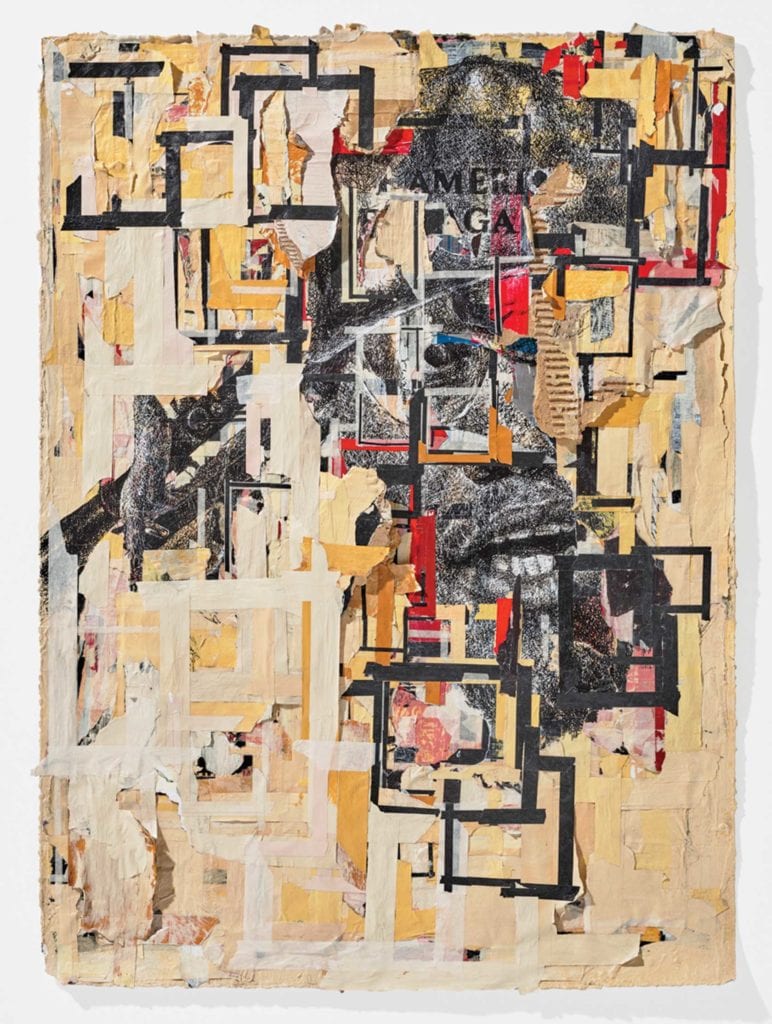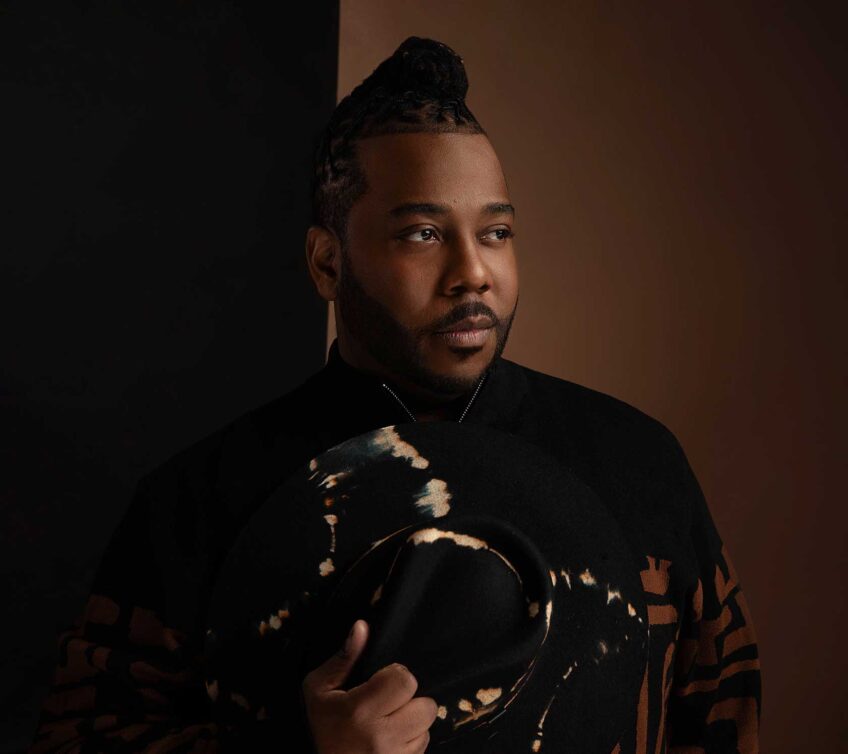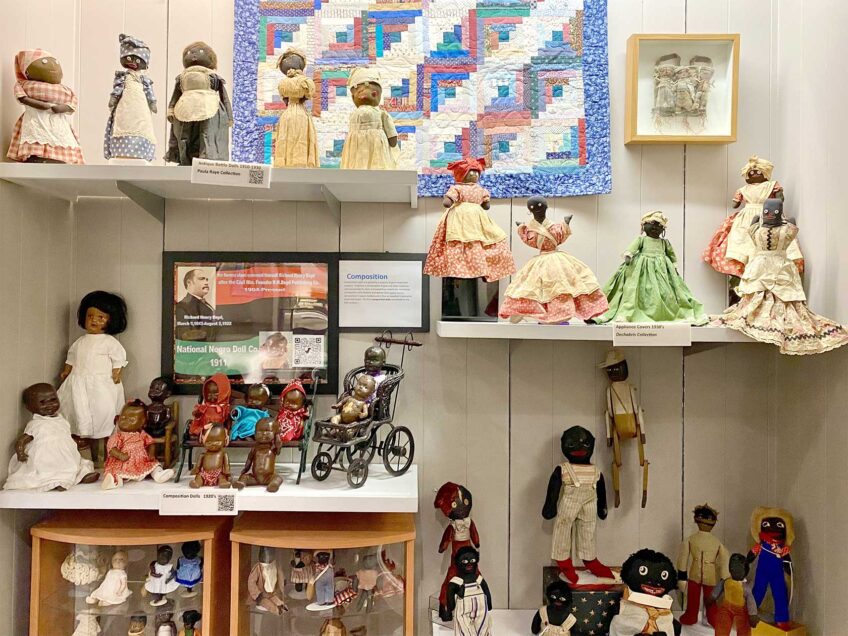
In “Timestream Muckery,” showing at Kingston Gallery through April 29, artist Jamal Thorne takes his unique, layered visual language, and uses it to dive into issues of trauma, race and memory. The show features an almost entirely new body of work created in the last six months in a burst of creative vigor and personal frustration.
Thorne creates his works by layering pieces of paper, tape, drawings, paint and other materials on top of each other. The result is a thick block of media that Thorne then cuts into to reveal pieces of drawings and symbols. The process off building and tearing down are as important to the art as the finished product.
“All the work is kind of about trauma, memory and time. Trauma in the sense that things happen to us and then life goes on. And as life goes on we don’t realize how the things from the past shape us,” says Thorne. The symbol of a broken frame is utilized heavily throughout the show, illustrating Thorne’s effort to recapture memories that may be broken or lost.
In “Green #1” Thorne has used the image, the memory, of a peaceful Civil Rights protest where police brutality was enforced on the marchers as a base. “This isn’t a memory I was present for. But that particular event shapes the way my community interacts with law enforcement. It shapes the way we perceive people of a certain ethnicity,” says Thorne. He’d added a drawing of the Black Panther to the scene, among other characters, to even the playing field.
In this way Thorne is using the piece to work through the collective trauma of the African-American people and his own personal anger at the persistent racial injustices around him. “Adding the Black Panther made this piece problematic for me. I felt like it wasn’t enough. The score still wasn’t even,” says Thorne. “I’m not a violent person. I don’t think violence is ever the answer, but I think that’s more a reflection of the anger that I feel sometimes.” Pop culture appears in other pieces of the show including a fusion of Kanye West and Malcolm X as a response to West’s verbal political alignment with President Trump.
In just a year since his last show, “Bootleg DeLorean,” Thorne has taken his unique style from an experimentation to an insightful, powerful artistic tool. Though his work is intimate and personal, it encourages viewers to reflect on their own trauma and memories. He says, “There’s the reclaiming of memory and the attempt of reclaiming memory. How do we process it? How do we start to poke at it?”



![Banner [Virtual] Art Gallery](https://baystatebanner.com/wp-content/uploads/2024/04/Cagen-Luse_Men-at-store-e1713991226112-150x150.jpg)

![Banner [Virtual] Art Gallery](https://baystatebanner.com/wp-content/uploads/2024/04/Cagen-Luse_Men-at-store-e1713991226112-848x569.jpg)

